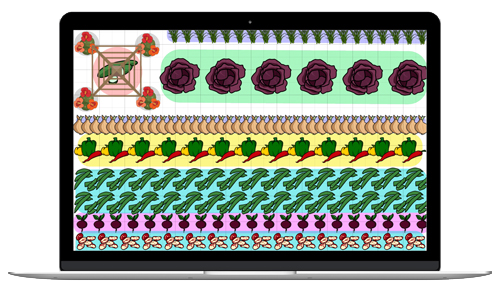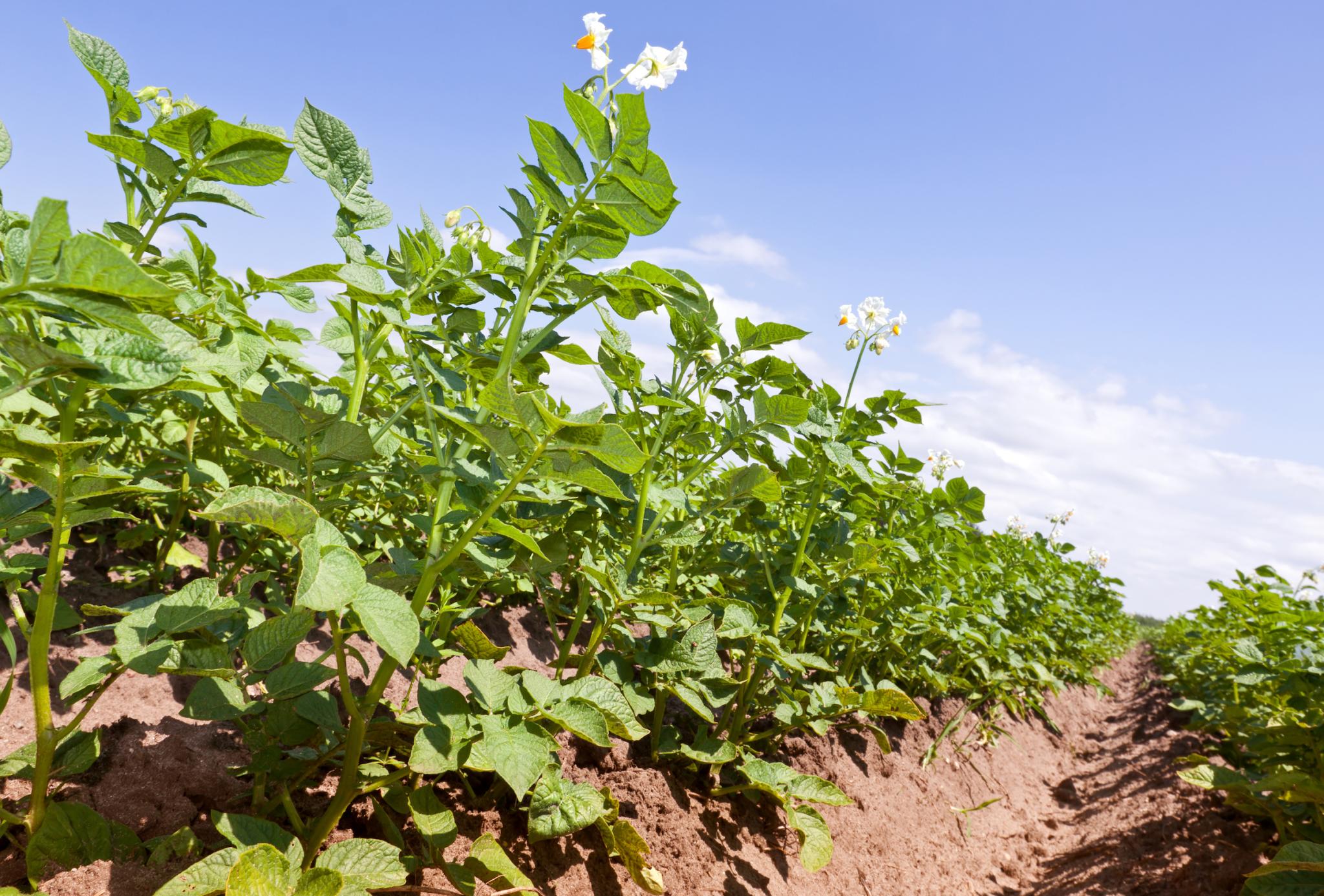
Planting, Growing, Harvesting, and Storing Potato Plants
The Almanac Garden Planner - Use It Free for 7 Days!
Plan your 2025 garden with our award-winning Garden Planner.
There are three classifications for potatoes based on when you harvest (vs. when you plant). If you harvest for storage, be sure to choose the right type:
- Early-season potatoes: first to be planted in early spring. Grow quickly (60 to 80 days), ready to harvest by early summer, tender flesh, thinner skin, store up to a few weeks.
- Mid-season potatoes (aka second early potatoes or “earlies”): mature in 80 to 100 days, typically lifted up from second half of summer, store up to a month.
- Late crops: mature in 100 to 130 days, best for storing, lasting 2 to 3 months in the right conditions; planted in August and harvested in fall.
Also, decide on the texture and flavor of your potatoes, and how you’d like to eat them:
- Dry-fleshed, mealy potatoes like russets and long white potatoes are used for baking, frying, and mashing. As mashed potatoes, they will not be gluey, and they will absorb gravy, butter or sour cream.
- Moist, waxy, round potatoes are great in soups, curries, frittatas, and salads because they don’t fall apart when cooked. You can pan-fry leftover boiled potatoes. When you mash waxy potatoes, they can become sticky.
- Red-skinned potatoes are often used for boiling or for potato salads.
Some popular potato varieties, such as ‘Yukon Gold’, fall somewhere in between truly waxy and mealy.
There are over 100 potato plant varieties! Go beyond the Idaho potato to explore more exotic and delicious options. See our article on choosing the best potato varieties!
Early Varieties:
- ‘Irish Cobbler’: tan skin, irregular shape (great heirloom potato for delicious mashed potatoes!)
- ‘Red Norland’: deep red skin, sweet, delicate flavor, great in potato salads or boiled
- ‘Mountain Rose’: red skin and pink flesh, resistant to some viruses
Mid-Season Varieties
- ‘Yukon Gold’: popular, tan skin and buttery-yellow flesh, mid to large size
- ‘Red Pontiac’: red skin, deep eyes (easiest and most adaptable red potato there is to grow)
- ‘Viking’: red skin, very productive
- ‘Chieftan’: red skin, resistant to potato scab, stores well
Late Varieties
- ‘Katahdin’: tan skin, resistant to some viruses
- ‘Kennebec’: tan skin, resistant to some viruses and late blight
- ‘Elba’: tan skin, large round tubers, resistant to blight and potato scab
- All Blue Potatoes
- ‘Fingerling Salad’ potatoes
Cooking Notes
Potatoes can be prepared in many ways: boiled, mashed, cut into pieces and roasted, french-fried, scalloped, made into dumplings or pancakes, grated into hash browns, and even brewed as alcoholic beverages.
Most potato dishes are served hot, but some are first cooked, then served cold, notably potato salad and potato chips.
ADVERTISEMENT
Grocery store potatoes are for eating; they are treated with a sprout inhibitor so they will have shelf life in the store. (Sure, eyes may sprout but not like those that appear on seed potatoes.) Seed potatoes are grown to produce edible potatoes. Certified seed potatoes are disease-free. Sources we consulted do not recommend using your harvested potatoes (from seed potatoes) for the next year’s crop. Opinions are mixed. If you do use your harvested potatoes as seed potatoes, strict storage conditions are advised (storage in a coo [50°F] area after harvest, then a 3 to 4 week period of hardening off/outdoor exposure and high humidity—also called greening. Crop rotation is also highly recommended. But that will not guarantee a desirable crop. Using green spuds is another topic on which growers take different sides.
I planted a potato about 8 weeks ago. I do not want it to be poisonous but I don't know if I am growing it right. I am giving it plenty of water and if it grows something i don't want it to be poisonous
Please help
Eight weeks is a long time to wait for your potato plant to send up some greens. If there is no sign of life coming from the soil something is wrong and nothing is growing.
I guess I forgot to completely inform you on everything. I started it with chits, about 6 inches from the bottom. The leaves grew through, every few inches I would cover them again. Now I am about 6 inches from the top of the bag. And something (I think it was an animal) ate the tops off. So again. Will my taters inside be okay? Will they re sprout? Or should i just dump the bag and start over?
Thank you again, and I apoligize for the first entry.
Without the tops, William, you might as well discard the bag. The leaves produce food for the tubers. Without the leaves, growth stops. Sorry to be the bearer of the news…
I have taters growing in a bag. Well something happened to the tops of the plants. Will they regrow? Will my taters inside the bag still grow? Or do I just empty the bag and start over?
hello this is the first year that i planted potato and when i did i just planted the whole potato and now there are like 17 or more plants all in a cluster can you tell me what will happen am i going to have a lot of potatos or am i going to have just a few how many potatos can i get from one stalk
Hi, Ron, It’s hard to know how many potatoes you might get, there is so much involved—soil, moisture, bugs, weather, etc., not to mention type of spud. Hope for the best.
Hi there, we have a lot plants come up from last year's plot and were wondering if the yield would be as good as last year or if it's worth ditching them now and planting a new batch? The plants are about 16 inches at the moment.
Last year’s potatoes should not be used as seed potatoes, so, yes, plant a new crop—but not in the same place! Rotate the plot location!














